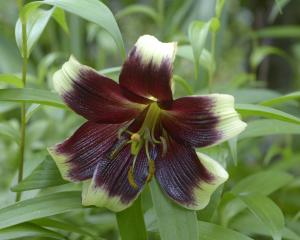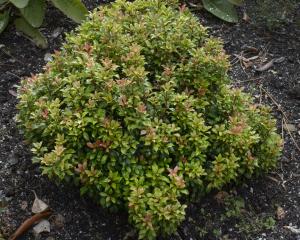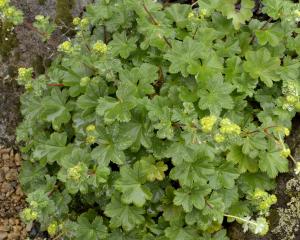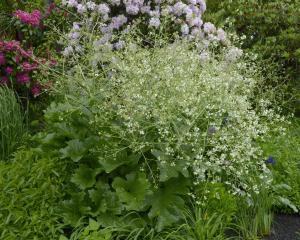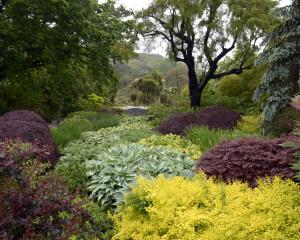There is an evergreen border in Dunedin Botanic Garden that I am particularly fond of, where some of our hardy local plant species grow side by side with tender natives from more northern climes.
Quietly residing in the native plant collection, this long tree and shrub border looks lush all year round.
Tall trees emerge from a subcanopy of smaller trees, a shrub layer, climbers and ground-covering plants, mimicking the tiered structure of a forest.
The biggest trees, planted in the 1930s, include a tall black maire (Nestegis cunninghamii).
Its olive-like drupes attract a variety of native birds.
Their chatter from high in the canopy during summer and autumn adds to the rainforest feel.
There is always something for birds in this area.
Puriri (Vitex lucens) has colourful flowers and fruit on it nearly all year round, and pate (Schefflera digitata) is at present adorned with fingers of near-ripe fruit.
Lancewoods are also in fruit.
A mature specimen of the common Pseudopanax crassifolius grows right next to the Chatham Island lancewood, or hoho (Pseudopanax chathamicus).
A sheltered microclimate allows frost-tender species such as the leafy, tropical-looking whau (Entelea arborescens) and kawakawa (Piper excelsum) to flourish in this border.
A grove of nikau palms (Rhopalostylis sapida), just over 20 years old, looks superb next to a thriving silver fern (Cyathea dealbata), and a huge lacebark (Hoheria sextylosa) is adorned with climbing rata (Metrosideros carminea) and an impressive kiekie (Freycinetia banksii).
The border runs parallel to Lovelock Ave.
What else can you find there?
• Kate Caldwell is curator of the native plant collection at Dunedin Botanic Garden.







